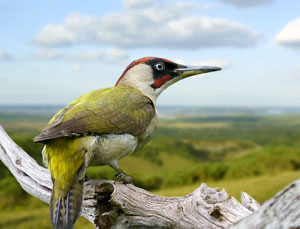Red Squirrels: Endangered But Not Not Extinct

The British red squirrel (Sciurus vulgaris) is a well-known and beloved symbol of the natural heritage of the United Kingdom. This lovable rodent has won people over for years with its vivid russet colour, tufted ears, and amusing mannerisms. It’s time to delve into the fascinating world of British red squirrels, examining the their traits, habitat, habits, state of conservation, and current initiatives to ensure their survival.
Characteristics and Appearance:

The striking features of the red squirrel make it easy to identify. The red squirrel has a white belly, a distinctive tuft of fur on each ear, and a russet-red coat that acts as camouflage in the wooded environment. For photographers and wildlife aficionados, their bushy tails and huge, expressive eyes complete their alluring appearance.
Habitat and Distribution:
In the past, the red squirrel ruled the British Isles as the predominant squirrel species. Red squirrel populations, however, decreased once the non-native grey squirrel (Sciurus carolinensis) from North America was introduced in the 19th century. Red squirrels are now more frequently observed throughout the UK’s north and west, including Scotland, Wales, and portions of Northern Ireland. Where they can find plenty of food and adequate nesting places, they prefer mixed coniferous and deciduous woods. In the south, Brownsea Island is still home to a large population of red squirrels.
Breeding and Life Cycle:
The breeding season for red squirrels normally lasts from late winter through early June. Males battle for the female’s attention at this time with loud vocalisations and spectacular chases. Females give birth to litters of usually three to four kits after a fruitful courtship; these kits are born hairless and blind. The kits grow quickly, and by the time they are 10 weeks old, they are prepared to go on their own.
Conservation Status and Threats:
The introduction of the grey squirrel and the spread of the squirrelpox virus, which is fatal to red squirrels but not to grey squirrels, have led to resource rivalry and a fall in the red squirrel population, respectively. Their susceptibility is also exacerbated by disease, traffic accidents, and habitat fragmentation. The UK Biodiversity Action Plan designates red squirrels as a Priority Species as a result.
Conservation Efforts:
Red squirrel populations across the UK are being diligently protected and restored by a plethora of conservation groups and neighbourhood projects. Making red squirrel refuges on islands or in places where grey squirrels don’t exist is one noteworthy endeavour. Red squirrels can flourish in these refuges free from the danger of grey squirrel competition or sickness.

Public Support and Appreciation:
The British red squirrel’s attractive qualities have sparked interest in and support for conservation efforts from the general population. Sighting opportunities for red squirrels, guided tours, and educational initiatives all help to spread awareness of the species’ condition and the value of preserving its habitat.
The British red squirrel, in conclusion, personifies the allure of the UK’s forests and natural diversity. These captivating species require our attention, protection, and efforts to ensure their existence as a beloved representation of the country’s wildlife. Together, we can celebrate and protect the red squirrel for future generations, ensuring that their colourful presence continues to adorn British woodlands.




